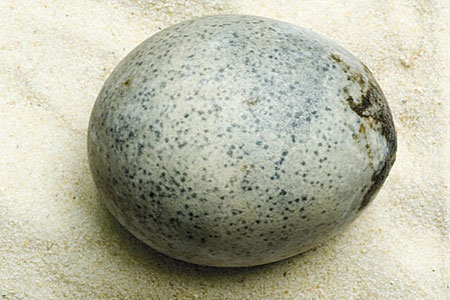
How old can eggs get— if they aren’t deliberately preserved — is a question facing archeologist investigating a 1,700 year old egg discovered in England. The shell is still intact and CT scans show the egg contains liquid, possibly consisting of the original yolk and albumen.
Where did this egg come from?
The egg’s contents were just recently CT scanned, although the egg was found in a well during excavations occurring in 2010. The excavations took place prior to development of a housing project in an ancient community built along a Roman road in Buckinghamshire, England, known as Berryfields. The egg is therefore sometimes called “the Berryfields egg” or “the Roman egg.”
Finding an intact egg from the Roman occupation of Great Britain was amazing enough. But discovering through scans that the egg retains liquid contents is “absolutely incredible” says Edward Biddulph, senior project manager at Oxford Archaeology. His organization engages in official archaeological fieldwork in advance of development. Not only have the egg’s contents not dried up, but scans reveal an air bubble, indicating that the shell membranes remain intact.
How did the egg get there?
The excavated well originally provided water for malting and brewing, according to Biddulph. Later it became a sort of wishing well, with various objects thrown in either for good luck or as offerings to the gods. The egg in question, along with three others, was deposited in the well sometime between AD 270 and 300.
The well was abandoned during the fourth century. Being below the water table, the erswhile well remained filled with water. During excavations, Oxford Archaeology discovered a number of preserved organic items in the well, including the four eggs.
One of the eggs was already broken. Two others broke during the excavation, releasing a powerful sulfurous odor. Miraculously, one egg remains intact.
How special is this egg?
Broken eggshells have been found in Roman graves, according to Biddulph. But so for no eggs as old as the Berryfield egg have been found that weren’t preserved on purpose.
However, deliberately preserved eggs have survived that are older. For example, mummified ibis eggs from ancient Egypt (BC) reside at the Natural History Museum, according to Douglas Russell, senior curator of the museum’s collection of birds’ eggs and nests.
The only other intact Roman-era egg was found in a baby’s grave in the Vatican necropolis. The baby died sometime between AD 50 and 150 and was buried with its hand wrapped around a chicken egg. Romans, among other cultures, associated eggs with fertility and rebirth. So the egg may have been symbolic of rebirth after the baby’s premature death.
At the time of that find in 2010, the egg was empty but the shell was intact. This finding implies that the egg was fresh at the time the baby was buried. The Berryfield egg also was fresh when placed in the well. But silt at the bottom of the well in which the egg had become buried is likely what kept the contents from drying out.
What kind of egg is it?
Who knows what kind of egg it is. Many media outlets call it a chicken egg. It’s about 2 inches long, approximately the same size as a chicken egg, but with an oddly speckled shell.
Exactly which avian species laid the egg is still a mystery, according to Russell. Not known is even whether the egg came from a wild bird or domestic poultry.
Also not known, he says, is the condition of the egg’s contents. Finding out exactly what’s inside the shell might reveal details about the egg’s origin. However, trying to extract whatever is inside could destroy the paper-thin shell.
Where is the egg now?
The egg is currently at the Discover Bucks Museum, which preserves archives from all archeological work in England. It is in a liquid-filled plastic bag, to prevent exposure to air, and sealed in a plastic box lined with acid-free tissue.
Staff members at the museum feel the egg has huge research potential. However, at this point they have no formal research plan, other than trying to figure out how to analyze the egg’s contents without damaging the shell.
And that’s today’s news from the Cackle Coop.
Gail Damerow has written numerous books about poultry, many of them available from the Cackle Bookstore. Egg image ©Oxford Archaeology.

